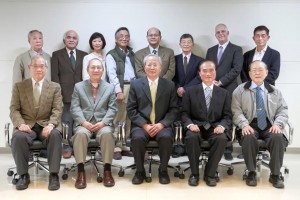At the start of November, the Editorial Board of the Journal of Biomedical Science gathered for a very special board meeting, marking the journal’s 20th anniversary. To celebrate this landmark, we spoke to Editor-in-Chief Wen-Chang Chang about the journal’s history and its switch – five years ago – to open access.

In the 20 years since your journal started, what changes have you seen to publishing, and researchers’ attitudes to open access?
In these 20 years, the Journal of Biomedical Science (JBS) has changed from traditional to open access publishing. The journal became open access in 2009. We noticed a tremendous increase in number of submissions when this change took place – from 286 submissions in 2008, to 524 submissions in 2009.
From this number, we can see researchers’ attitudes towards open access publishing. This increase indicated that researchers were more willing to submit their papers to the journal when it became open access.
Open access has allowed researchers to get access to articles they are interested in immediately, as the paper is published online, and that makes the article more likely to be noticed and cited. This advantage has attracted researchers’ attention and encouraged them to publish their papers in an open access journal.
What do you think has been the journal’s biggest achievement in the last 20 years (other than impact factor) and did being open access help you to achieve it?
The biggest achievement of JBS in the last 20 years is its gaining international recognition. The journal was founded by the National Science Council in Taiwan 20 years ago. At that time, most submissions were from Taiwanese researchers. However, based on recent statistics, the percentage of submissions from other countries is going up.
In 2013, papers from Taiwan comprised only 13% of all 882 submissions. This means that JBS is not only recognized in the national academic community, but it has also gained a reputation worldwide. Being open access certainly has helped the Journal in every way. Open access has helped to make papers available to anyone with internet access and in turn attract more papers with merit. Consequently, it increases the Journal’s impact factor and its worldwide recognition.
If open access had been around when you were starting your research career, what impact do you think it would have had?
If open access had been around when I was starting my research career, I believe it would have allowed me to have access to the latest findings in my area of interest. With open access, I could extend my research further based on the most recent findings of others. Likewise, my studies would be shared more quickly and to more researchers throughout the world. This would have greatly helped the academic community to exchange ideas and findings, resulting in faster and better development of research.
Where would you like your journal and open access publishing to be in 10 years’ time?
With open access publishing, and with more submissions of high quality papers, I would aim for the journal to achieve a better impact factor, and hopefully it can serve as a reputable scholarly platform for researchers to publish their valuable studies.
What advice would you give to a researcher who’s publishing for the first time and isn’t sure about whether or not to publish open access?
I would tell the researcher that open access publishing can help you to develop your research by sharing your experiences and practices with researchers around the world. In return, you are able to have the immediate access to latest discoveries of others and can mutually learn from these experiments and research findings.
Comments